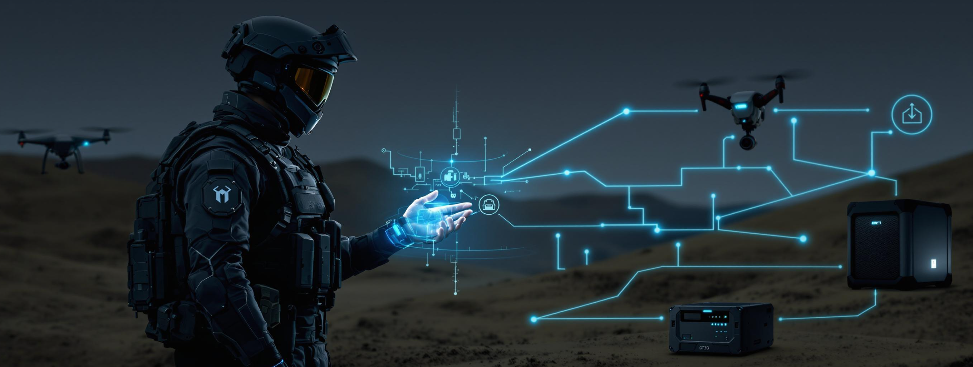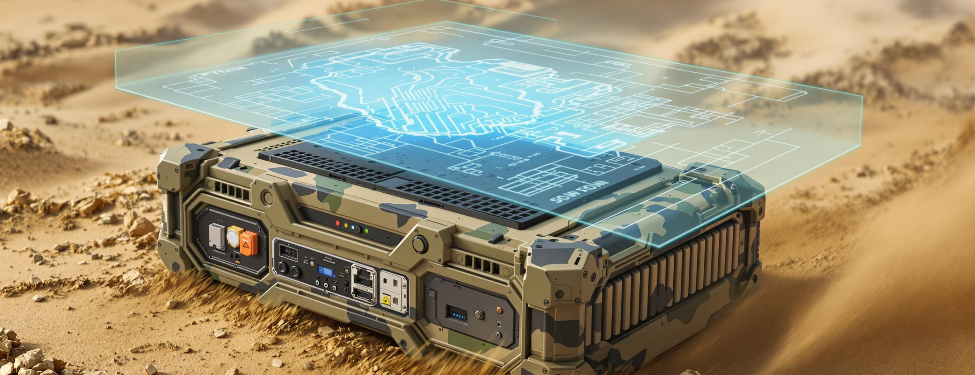

In today’s rapidly evolving battlefield environment, the ability to make quick informed decisions at the tactical edge often becomes the key to mission success or failure. The traditional model of relying on centralized command and control centers for data processing is increasingly inadequate in the face of modern threats and the massive data generated by advanced sensor systems. Edge computing is reshaping the nature of warfare by deploying computational power and analytical capabilities directly to the front lines, providing combat personnel with real-time battlefield intelligence. This article will explore the transformative potential of edge computing in defense applications, focusing on its profound impact on situational awareness, autonomous systems, and future modes of warfare.
Limitations of Centralized Processing
Traditional military operations rely on a hierarchical command structure, where battlefield data must be relayed back to a central node for processing. This model presents multiple challenges:
- Latency issues: The time taken for data transmission can delay critical opportunities. For example, when a drone (UAV) detects a target instantaneously, the return of central decision-making may result in the closure of the strike window.
- Bandwidth bottlenecks: The data deluge generated by modern sensors (ISR platforms, soldier-worn devices, etc.) can easily overwhelm limited bandwidth, particularly in contested or harsh environments.
- Vulnerability risks: Centralized processing centers pose a single point of failure risk. If communication links are disrupted or the center is attacked, the entire operational network can become paralyzed.
- Denial threats: Enemy electronic warfare (EW) capabilities are increasingly sophisticated, effectively isolating forward units by disrupting communication links, resulting in a loss of battlefield awareness.
Edge Computing: Empowering the Tactical Edge
Edge computing achieves a paradigm shift by deploying computational power at the source of data (the tactical edge). Sensors, vehicles, and even individual soldier equipment can autonomously process information, freeing themselves from absolute reliance on remote data centers.

Core advantages of defense edge computing:
- Enhanced situational awareness: Real-time processing of sensor data generates immediate battlefield awareness. For instance, AI algorithms on soldier devices can analyze video streams in real-time to identify threats, while UAVs can autonomously detect and track targets without continuous communication with command nodes. This capability significantly compresses the OODA (Observe-Orient-Decide-Act) loop cycle, enhancing dynamic threat response effectiveness.
- Support for autonomous systems: True deployment of autonomous systems relies on edge computing. Unmanned platforms such as drones and ground robots utilize onboard computational power to navigate complex environments, make autonomous decisions, and respond to sudden situations without continuous human intervention or stable communication links.
- Minimized latency: Local data processing compresses the time for intelligence transformation to the extreme, which is crucial for time-sensitive tasks such as target locking, threat identification, and evasive maneuvers.
- Bandwidth optimization: By filtering data and managing priorities, communication loads are reduced, transmitting only critical information to higher-level nodes while preserving core communication bandwidth resources.
- Resilience and redundancy: A distributed computational architecture enhances the resilience of the operational system. When a single node fails or communication is interrupted, other nodes can still operate independently to ensure mission continuity. This decentralized architecture significantly reduces the risk of single points of failure, providing a strategic advantage in contested environments or against advanced electronic warfare threats.

Future Warfare: Networked Intelligent Edge
Edge computing is not just a technological upgrade; it represents a fundamental transformation in operational modes. It will create a networked battlefield ecosystem, achieving intelligent interconnectivity among sensors, platforms, and combat personnel:
• Edge AI-driven insights: Machine learning algorithms deployed on edge devices provide real-time threat prediction and decision support, enhancing human battlefield cognition. • Swarm robotics collaboration: Autonomous system swarms rely on distributed intelligence to achieve coordinated operations against complex targets. • Adaptive communication networks: Dynamically optimizing data transmission paths ensures stable communication in contested environments. • C4ISR system evolution: Command, control, communications, computers, intelligence, surveillance, and reconnaissance systems achieve capability leaps through efficient information processing and distribution.

Conclusion
Edge computing is reshaping national defense operational modes by bringing intelligence to the frontlines, providing combat personnel with unprecedented situational awareness, autonomous decision-making, and response speed. As technology matures and becomes widely adopted, it will undoubtedly shape the future of warfare, creating a more agile, resilient, and lethal operational system. Transitioning to the intelligent edge is not just a technological option but a strategic necessity to maintain decisive advantages in the complex and dynamic battlefields of the 21st century.
Source: ZHUAN ZHI Intelligent Defense

Follow our public account for more information
Membership application: Please reply “Individual Member” or “Unit Member” in the public account
Welcome to follow the media matrix of the China Command and Control Society

CICC Official Douyin

CICC Toutiao Account

CICC Weibo Account

CICC Official Website

CICC Official WeChat Account

Journal of Command and Control Official Website

International Unmanned Systems Conference Official Website

China Command and Control Conference Official Website

National Wargaming Competition

National Aerial Intelligent Game Competition

Sohu Account

Yidian Account